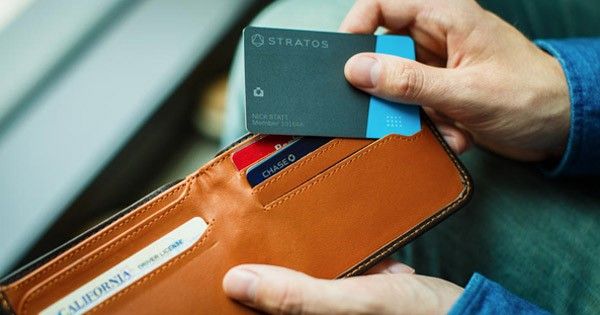Stay connected
Subscribe to our Inside WEX blog and follow us on social media for the insider view on everything WEX, from payments innovation to what it means to be a WEXer.
"*" indicates required fields

With all the buzz about mobile payments, you’d think the tap-or-scan payment method was ubiquitous. Newsflash: not all transactions are made on a mobile device. They are increasingly digital, though, and payment technology innovations like the connected card are keeping consumers’ wallets lighter—if not out of their pockets altogether. That’s right, all-in-one connected cards are a solution for consumers who want the security and convenience of mobile payments but prefer the familiar experience of using a physical card.
A connected card looks, feels, and functions like a traditional credit card, but it’s Bluetooth-enabled. It syncs with a smartphone app to consolidate all the cards in a consumer’s wallet. Depending on the solution provider (e.g. Coin, Plastc, Stratos, and presumably, LG), a person’s single connected card holds their:
To set it up, the consumer plugs a small card reader into their smartphone and swipes their various cards into a mobile app that’s used to store, centralize, track, and manage the cards. By digitally syncing with the mobile app, the connected card has access to all of the consumer’s individual cards, enabling the consumer to leave all but one card—their connected card—at home. And there’s no question that toting around one card instead of many lightens the load for consumers: the folks at Coin claim their connected cards have lightened wallets by 2 tons (the equivalent of 1 car) and slimmed wallets by 5.5 Statues of Liberty.
When the consumer is ready to make a payment, they bring their card to the point of sale, just like they’re used to doing. But because their connected card has access to more than one payment source, they have to select the card they want. Each connected card on the marketplace works a little differently. The user may:
The connected card can be swiped or tapped just like their traditional credit card—without the fuss of rifling through a wallet or purse. And some cards are “smart” enough to tell the consumer that they have a gift card from the merchant that’s available to use.
Plus, transactions are smart and secure, like mobile payments. Digital card management means connected cards offer enhanced security with bank-level encryption. For one, they don’t display card numbers. And since use of the card is smartphone proximity-based, the card gets “locked down” it’s left unattended—or otherwise away from its connected mobile device.
Connected cards are gaining attention in the payments space as viable alternatives to mobile payments—and to replace the cumbersome stacks of credit cards stuffed in consumers’ wallets. The marketplace for both mobile payments and connected cards is still young, so we’ll keep you updated on what types of payment technology is “sticking” with today’s consumers.
Subscribe to our Inside WEX blog and follow us on social media for the insider view on everything WEX, from payments innovation to what it means to be a WEXer.
"*" indicates required fields